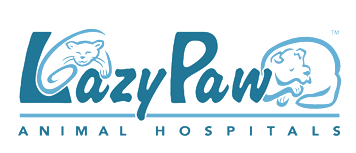Steps For Managing Your Dog’s Leash Aggression
Do you ever dread taking your dog on walks in your neighborhood, because you know they will bark and lunge at every dog they encounter? This is very common for dogs on leashes ? even if they act friendly off the leash. This behavior is known as “leash reactivity.” There are a few reasons dogs react this way. It could be because they have had bad experiences in the past, or they become frustrated from feeling restrained by the leash. Regardless, it makes walks very uncomfortable for you and the other dog owners you encounter.
Below are the steps you can take to work towards ending this bad behavior.
Avoid potentially bad situations at first
It is totally acceptable to avoid situations that you know may upset or aggravate your dog when you first start noticing their reactive leash behavior. The more you allow your dog to engage in aggressive behavioral situations, the better they will get at it. Before you are able to take next steps, try to keep your dog away from other dogs. If you have a small dog, it is easiest to just pick them up and cover their eyes when approaching another dog, and if you have a large dog, try to steer them in the opposite direction or distract their attention.
Start the training process
Avoiding situations only works for so long, and it is best to find time and train your dog. The goal is to change the way your dog feels about other dogs while on a leash, and you want them to have a positive outlook when approaching them.
Recruit a friend/fellow dog owner to assist you during the training process
, and have them bring their dog (make sure they are social or neutral) to serve as the “approaching dog.” Make sure to bring a good amount of treats cut up into tiny pieces. Have the neutral dog appear for a few seconds. Once your dog sees the other dog, immediately start feeding them treats before they even have time to react. Feed them about 10 pieces in a row, and then have the neutral dog walk out of site. Once they no longer see the other dog, stop feeding your dog treats. Do not pet or even look at your dog when the neutral dog is gone. Repeat this process several times. This will relay the message to your dog that good things happen when they see another dog.
If this training method does not seem to be working for your dog, you may have to result to using a head halter. Using a head halter during training sessions and regular walks may be your best bet if your dog is extremely aggressive. Make sure and do your research before using a head halter to assure you understand the most beneficial ways to use one.
Continue to reward good behavior
.
After your dog is successfully trained, and they are able to approach other dogs without lunging and barking, it is good to continue to reward their good behavior. Keep treats with you when going on walks and occasionally remind your dog that approaching other dogs is a positive experience.
Visit your veterinarian to find out more about your dog’s aggression. It is important that your dog is safe for others to be around, and it will be more enjoyable for you as a pet owner. Give us a call at Lazy Paw, and we would love to help you!
